Hall of Fame
The things we are willing to tell ourselves as fans can sometimes be quite outlandish. Back in 1997, if you polled Mets fans, they would probably tell you they would rather have Todd Hundley than Mike Piazza. Why not?
The two were the same age. Both were All Stars in 1996 and 1997. In those two years, Hundley had hit 71 homers to Piazza’s 76. Hundley had 198 RBI to Piazza’s 229. Hundley’s 53 doubles surpassed Piazza’s 48. In fact, Hundley’s 127 extra base hits were actually two more than Piazza’s 125. On top of that, Hundley was a switch hitter and a much better defensive catcher. He was the homegrown Met that was afan favorite with his very own Todd Squad cheering section at Shea Stadium. Hundley’s career was taking off, and he was seen by Mets fans as a newer version of Gay Carter. When he returned from his elbow surgery in 1998, he was expected to once again be the slugging defensive minded catcher who was going to lead the Mets to the postseaon for this first time in a decade. If you took a poll of Mets fans, they may begrudging admit Piazza was the better player, but overall, they would also state their belief that they would rather have Hundley as he was their guy. It was all a moot point anyway because there was no way the Dodgers would ever get rid of Piazza.
Until they did. There wasn’t a baseball fan alive in 1998 that was utterly shocked when Piazza was traded to the Florida Marlins along with future Met Todd Zeile for a package that included future Met Gary Sheffield and former/future Met Bobby Bonilla. Once Piazza was a Marlin, the world over knew the team that sold everything except the copper wiring after winning the 1997 World Series was going to trade the impending free agent Piazza. All of a sudden, the very same Mets fans who loved Hundley, desperately wanted Piazza. Myself included.
It was certainly possible. In that offseason, the Mets had acquired Al Leiter and Dennis Cook. There was a reporte there. Even with those trades, the Mets still had a good farm system headlined by Mookie Wilson‘s stepson, Preston Wilson, who could justifiable headline a Piazza trade. Without Hundley, the team was languishing around .500, and they needed a shot in the arm if they were ever going to earn a postseason berth. You could tell yourself that when Hundley got back he could either play left field in place of the struggling Bernard Gilkey or in right in place of another fan favorite, Butch Huskey. At least, that is what you told yourself.
Amazing, it actually happened. On May 22, 1998, the 24-20 Mets actually pulled off a trade to acquire Piazza. Perhaps just as a amazing, when the Mets activated Hundley from the disabled list on July 22nd, they put him in left field. Very rarely in life does things happen exactly as you imagined it would. This did.
Except it didn’t. While Piazza was originally greeted with a hero’s welcome, he would then become roundly booed by the very same fan base who was desperate to acquire him. Hundley would be a disaster in left field. As uncomfortable as he was in the field, he was equally uncomfortable at the plate hitting .162/.248/.252 with only one home run. He eventually forced Bobby Valentine‘s hand, and he became the backup catcher to Piazza. In retrospect, how could it have ever worked? Piazza was a star in Los Angeles, which is nowhere near the hot bed New York was. Hundley was a catcher out of the womb as he was taught the position by his father Randy Hundley.
But then on a September 16th game in the old Astrodome, it all worked according to plan. In the top of the ninth, with the Mets trailing 3-1, Piazza, who had been 0-3 on the night, stepped in the box against Billy Wagner with two on and two out. He would launch a go-ahead three run homer. After Cook blew the save in the ninth, Hundley would be summoned to pinch hit in the top of the 11th. He would hit a game winning home run. It would be the first and only time Piazza and Hundley would homer in the same game. In fact, it was Hundley’s last homer as a Met. At that point, the Mets seemed to have control of the Wild Card, but they would eventually fall apart, thanks in LARGE part to Mel Rojas, and they would just miss out on the postseason.
Going into that offseason, the Mets had to make a choice. Do you stick with your guy Hundley behind the plate, or do you bring back Piazza. To everyone’s delight, the Mets made Piazza the highest paid player in the game giving him a seven year $91 million dollar contract. When the Mets re-signed him, the Mets seemed assured of returning to the postseason.
And they did with the help of both Piazza and Hundley. With Piazza back in the fold, the Mets had to move Hundley. That spurned two shrewd moves by Steve Phillips that helped build a supporting cast around their superstar. Hundley was traded for Roger Cedeno and Charles Johnson, the same Johnson who was traded by the Marlins to acquire Piazza. Cedeno would spend 1999 being tutored by Rickey Henderson, and he would set the then Mets single season record for stolen bases while manning right field. Phillips would then flip Johnson for Armando Benitez, who would become a dominant closer out of the bullpen.
Piazza was dominant that year. He hit .301/.361/.575 with 40 homers, a Mets right-handed batter single season record, and 124 RBI, which is the Mets single season record. He led the Mets throught the play-in game and into the NLCS. His seventh inning opposite field home run off John Smoltz in Game Six of the NLCS tied the game at 7-7. In a game they once trailed 5-0 and 7-3 and a series they had trailed three games to none, it seemed like the Mets were on the verge of pulling off the impossible. With a Kenny Rogers walk, they didn’t. The Mets came so close to making the World Series, but they fell short. Even with as much as Piazza gave them, they would need more in order to make it to their first World Series since 1986 and to play in consecutive postseasons in team history.
Amazingly, Piazza had another gear. He would hit .324/.398/.614 with 38 homers and 113 RBI. It remains the highest slugging percentage in team history. The 78 homers and 237 RBI over two years stands as the team records over a two year stretch. He would tie the Mets single season record with three grand slams. In 2000, the Mets would go to the World Series, and they would fall agonizingly close as his shot to center field fell just short of tying the game.
It was a start to an amazing Mets career and part of a Hall of Fame career. Before Piazza left the Mets after the 2005 season, he would hold many records. He would have the most home runs by any right-handed Mets batter and second most all time to Darryl Strawberry. He would also be second to Strawberry in team RBI. He would be passed by David Wright in those catergories. However, Wright wouldn’t pass Piazza in some other catergories. Piazza has the third highest team batting average, and he has the highest slugging percentage in Mets history. He would also hit the most home runs all time by a catcher surpassing Johnny Bench. It was one of many memorable home runs in Piazza’s time with the Mets, which included the June 30, 2000 home run capping a 10 run eighth inning rally that saw the Mets overcome an 8-1 deficit against the Braves, and the most important home run he would ever hit:
Now, Piazza is going to be a Hall of Famer. He is going to be a Hall of Famer in a Mets uniform. It never seemed possible.
Years ago, Mets fans would’ve picked Hundley over Piazza. Almost twenty years later, Piazza chose us when he chose to enter the Hall of Fame as a New York Met joining Tom Seaver as the only Mets in the Hall of Fame. It was an incredible ride that has seen Piazza become perhaps the most beloved Met to ever wear the uniform. He deserves that love and much more. He deserves every congratulation and accolade the Mets, Mets fans, and all of baseball can throw his way.
Thank you Mike Piazza.
On Sunday, the Mets have an important game against the Miami Marlins. Entering this three game set, the Marlins led the Mets by 1.5 games for the Wild Card Spot. Friday night’s win shrunk that lead to 0.5 Depending on the results of today’s game, the Mets could be leaving Miami having surpassed the Marlins for the second Wild Card spot.
Overall, no matter how much is at stake in what will be the most important game of the season to date, not one Mets fan will be watching that game.
Instead, they will be watching Mike Piazza join Tom Seaver as the second Met to be inducted into the Baseball Hall of Fame. We want to hear the improbable story of just not how a 62nd round draft pick persevered and became not just a major leaguer, but also the greatest hitting catcher. We want to re-live every home run including his post 9/11 home run which means more to New York and Mets fans than anyone could possibly know. We want to remember those 1999 and 2000 years that were among the best in Mets history. And yes, we will enjoy some schadenfreude that it’s Piazza getting inducted and not Roger Clemens.
We will all watch Piazza and not the Mets game because they are both on at the same time. The Mets game starts at 1:10 and the Hall of Fame Induction Ceremony begins at 1:30. In essence, baseball is making fans choose between watching their favorite team and watching their favorite player be forever immortalized. You can’t even pray for rain as Marlins Park has the retractable roof. You have to choose between one or the other. It makes no sense, and it’s something that is an easy fix.
Major League Baseball and the Baseball Hall of Fame could coordinate this to permit fans to watch both the induction and the games. The induction ceremony could be moved up an hour or so, and/or the games could be pushed back to permit fans to see both without conflict. It makes sense, and by the way, isn’t this what baseball wants? Don’t they want fans to watch both the induction ceremony and the games?
To answer the rhetorical question, of course they do. The fans want to watch both as well. With that in mind, baseball needs to fix this situation as soon as possible. It’s too late this year. Hopefully, it won’t be when Carlos Beltran joins Seaver and Piazza in the Hall of Fame.
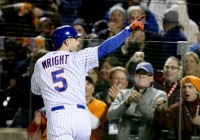
When David Wright came up in 2004, we thought every year was going to be like last year. Much like this year, we anticipated that each and every year Wright manned third base, the Mets would contend for a World Series.
As we know, it didn’t happen that way. A lot went wrong. The Mets came ever so close in 2006. They collapsed in 2007 and 2008. A poorly designed outfield, poor personnel decisions, and financial crisis ensued. Then, as things began to turn around, Wright injured his hamstring. Then he was diagnosed with spinal stenosis. Last year was his first trip to the World Series. This year may be his last year as a key contributor on a World Series team.
It could also be Wright’s last year to build his Hall of Fame credentials.
Third base is the least represented position in the Hall of Fame. Accordingly, standards are high to enter the Hall of Fame as a third baseman. The average of 13 Hall of Famers at the position had a career WAR of 67.5, a WAR7 (best seven years combined) of 42.7, and a JAWS of 55.1. Looking at the stats, Wright falls short. His career WAR is 50.1. His WAR7 is 40.0. His JAWS is 45.1. For a player that Mets fans believed would be a Hall of Famer, he now has an uphill climb.
WAR7
Looking at theses factors, it’s presumably easiest for Wright to increase his WAR7. To do so, he would need to have one year where he accumulates 2.7 more WAR that his seventh best season. Here are his seven best WAR seasons:
- 2007 – 8.3
- 2012 – 7.0
- 2008 – 6.8
- 2013 – 5.9
- 2005 – 4.8
- 2006 – 4.1
- 2009 – 3.2
For Wright to put his WAR7 within range, he would need to have one more season that is 5.9 or better. Wright last did that in 2013. That year Wright only played on 112 games. He hit .307/.390/.514 with 18 homers and 58 RBI. His 156 OPS+ was the best of his career. In that season, Wright missed a significant amount of time with a strained hamstring. Sounds just like his April 2015 hamstring injury that wouldn’t heal.
The Mets are hopeful that Wright can play 130 games in 2016. Judging from Wright’s 2013 season, it is certainly possible that Wright can have a 5.9 season again. A better and much stronger Mets lineup will assist him in that task.
Cumulative WAR
Going into the 2016 season, Wright has a career WAR of 55.1, which is presumably 12.4 behind the 67.5 career WAR he would need to be enshrined in the Hall of Fame.
This is where things may get a little tricky for Wright’s chances. Don Mattingly had back problems, and his once promising Hall of Fame career was over at 34. Lenny Dykstra had spinal stenosis, and his career was over at 33. David Wright is entering his age 33 season. Based on other player’s careers, he’s near the end of his career. If Wright plays past his age 34 season, he will be in uncharted territory.
Naturally, it is safe to assume Wright will not have a 12.4 WAR season thereby cementing his Hall of Fame case. To do that, Wright would have to match Babe Ruth‘s 1927 season when he hit 60 homeruns. No, if Wright is going to accumulate the needed 12.4 WAR, he’s going to have to remain healthy and effective. He’s going to have to manage his spinal stenosis.
Wright is currently signed until 2020. There are $90 million reasons why Wright will do all he can to finish that contract.
Presuming Wright does do that, he has five more years left in his career. In order to attain the necessary 12.4 additional WAR, Wright will have to average a 2.5 WAR a year for those five seasons.
In 2014, Wright played 134 games, and he was a 2.7 WAR player. In that season, he hit .269/.324/.374 with eight homers and 63 RBI. If Wright manages his back, and his treatments are effective, seasons like this over the next five years are certainly attainable.
Other Criteria
As Wright’s peak is over, there really isn’t anything he can do to improve his JAWS. With that in mind, we need to look at other areas that would improve Wright’s Hall of Fame case.
Unfortunately, he will be unable to surpass Mike Schmidt‘s 548 homeruns or even reach the once magic number 500 homeruns. He won’t catch Chipper Jones‘ 1,623 RBI. He won’t catch Brooks Robinson‘s 16 Gold Gloves at third base. It does not appear Wright will reach 3,000 hits as he would need to average 250 hits over the next five years to reach that number. No, it seems like the only thing that will help Wright is the narrative.
The best thing going for Wright is the fact that he will most likely play his entire career as a Met. Aside from Tom Seaver, Wright is making a case as the best player to ever play for the Mets. Here are his Mets rankings:
- Games Played – Second (307 behind Ed Kranepool)
- Runs – First
- Hits – First
- Doubles – First
- Homeruns – Second (17 behind Darryl Strawberry)
- RBI – First
In addition, Wright’s 50.1 WAR with the Mets is the second most any player has accumulated with the Mets; the most accumulated by any Mets position player. Even with Mike Piazza‘s recent election to the Hall of Fame, it appears that Wright is the team’s best position player.
So overall, Wright still has a legitimate shot at the Hall of Fame. His name will be atop all the major offensive catergories. His WAR and other catergories will put him on the cusp of election. A strong 2016 will get him a lot closer to those goals.
Winning a World Series in 2016 can’t hurt either.
Editor’s Note: this article also appeared on metsmerizedonline.com

There was a long 23 year wait between the induction of Tom Seaver and the induction of Mike Piazza to the Hall of Fame. While I’m still overjoyed at Piazza entering the Hall of Fame as a Met, I’m curious if the Mets will have to wait another 23 years for another one of their players to go in as a Met.
Looking over the future years’ ballots, there are some former Met players like Jason Isringhausen eligible. However, it’s not likely any of them will be elected. Furthermore, if they are elected, they will most likely not be inducted as a Met. Therefore, if we don’t want to wait another 23 years, we’re going to have to look at current players; preferably those towards the end of their careers. As it so happens, it has been rumored Carlos Beltran may retire at the end of the year. That would mean he could be inducted anywhere between 2022 – 2032. That would mean the next possible Mets Hall of Famer would be within the next six to 16 years.
However, I’m getting ahead of myself here. The first question is whether or not Beltran is a Hall of Famer. I’d argue he is.
For his career, Beltran has hit .280/.355/.490 with 392 homers while playing the majority of his career at a premium defensive position. In an average season, he hits 28 homers and 101 RBI. He’s part of the 300/300 club. He’s won the Rookie of the Year, been an eight time All Star, and won three Gold Gloves and two Silver Sluggers. All of this is indicative of a Hall of Fame career.
The advanced stats also suggest he has a good case. On average, a Hall of Field centerfielder has a 70.4 WAR, 44.0 WAR7 (best seven seasons WAR combined), and a 57.2 JAWS score. Beltran right now is at 68.4/44.3/56.4. Essentially, his peak years were Hall of Fame worthy, and he’s right on the cusp of playing his entire career at a Hall of Fame level.
Even if he falls short in a few areas, he’s bound to get credit for being an incredible postseason player. He has hit .332/.441/.674 in the postseason. Strikeout or not, he’s amongst the greatest postseason performers in major league history. If he retires without playing a game this season, he’s a Hall of Famer.
The next question is what hat will he wear. That’s not as clear cut. Essentially, Beltran will have three options: (1) Royals; (2) Mets; or (3) no affiliation. It’s a tough decision. He played eight years each for the Royals and Mets, playing only 44 games more with the Mets. Overall, he was a better player with the Mets.
He hit .280/.369/.500 with 149 homers as a Met as opposed to .287/.352/.483 with 123 homers as a Royal. He won all of his Gold Gloves as a Met, and he appeared in five of his eight All Star Games as a Met. He accumulated 31.3 WAR with the Mets and 24.7 WAR with the Royals. However, you can’t discount the potential emotional tug he may feel towards the team that drafted him. A place he won his Rookie of the Year Award.
It all got me thinking. Piazza chose the Mets, in part, due to his relationship with the fans. Like Piazza, Beltran initially had a rocky relationship with Mets fans getting booed in 2005. However, even with the strikeout, I believe things got better. He received cheers and standing ovations in his last home game as a Met. He noticed them too. He Was cheered loudly at the 2013 All Star Game during introductions, and that was while wearing a Cardinals uniform. Lastly, but more importantly, Beltran said he could see himself entering the Hall of Fame as a Met.
Like Piazza, Beltran was a great Met. Like Piazza, Beltran deserves induction into the Hall of Fame. When that day comes, I hope Beltran is like Piazza, and he enters the Hall of Fame as a Met.
Editor’s Note: this article first appeared on metsmerizedonline.com
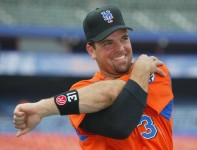
There have been some irresponsible opinions that Mike Piazza‘s election to the Hall of Fame means it will pave the way for known steroid users to be elected to the Hall of Fame. This premise contains one potential logic fallacy. It presupposes Piazza used steroids. Did he?
Let’s start with the case against him. There are no reports, investigations, or tests linking him to steroids. The case against him boils down to rumor, innuendo, and skin problems. We have no statements from teammates, clubhouse workers, or anyone else who may have any link to Piazza establishing he used steroids. So that makes me question how do you counteract rumors and innuendo? Facts don’t work. Piazza’s denials haven’t worked. Overall, the only way to combat rumors and inneundo is to present what people will actually say in public about a person.
Cliff Floyd was a teammate of Piazza from 2003 – 2005. Floyd is an analyst all over the place from MLB Radio, MLB Network, and SNY. Here’s his opinion on steroid users and the Hall of Fame:
https://mobile.twitter.com/mlbnetworkradio/status/684848408364998656
Floyd doesn’t want steroid users in the Hall of Fame. Here’s how he reacted when Mike Piazza was elected:
@mikepiazza31 Congrats big fella…well deserved-glad I could be a part of your journey! #HOF
— cliff floyd (@CliffFloyd30) January 6, 2016
Floyd didn’t choose to ignore Piazza’s election. He didn’t condemn the choice. He celebrated Piazza’s induction. Floyd shared a clubhouse with Piazza for three years. If anyone would know he used steroids, it was Floyd. However, there were no accusations from him. Just congratulations. From this it is apparent that Cliff Floyd does not believe his former teammate used steroids.
I already know the rebuttal. Steroid testing in baseball began in 2003. Of course Floyd saw nothing. This rebuttal doesn’t take into account that no teammate has ever spoken about Piazza using steroids. Unfortunately, that hasn’t been good enough thus far. To that, my next example is Al Leiter.
Like Floyd, Leiter is all over the place covering baseball. Leiter was Piazza’s teammate from 1998 – 2004. They played together a long time, and Leiter threw to Piazza more than any other catcher. Here was Leiter’s ballot on MLB Network:

It should first be noted Leiter doesn’t actually have a ballot. The above photo from MLB Network shows how he would have voted if he had a vote.
Note, there’s no Barry Bonds or Roger Clemens on the ballot. Leiter didn’t vote for two people who have been linked to steroids use during their careers. These are two people who would’ve been elected but for their steroid use. Leiter didn’t vote for people who we know from various sources that used steroids. Yet, Leiter voted for Piazza. Other than Piazza himself, who would know better than Leiter if Piazza used steroids?
If teammates like Leiter and Floyd don’t link Piazza to steroid use, how can anyone else? If we’re going by word of mouth or rumor, shouldn’t we at least take into account the opinions of Piazza’s teammates? These are people who have put their name out there and have separated Piazza from the group of known steroid users. They now are now members of the media and are staking their reputations if it ever came out that Piazza used steroids. I find it hard to believe there is a massive Mets cover up afoot; a coverup which includes each and every player and former player.
Isn’t this substantive proof that Piazza DID NOT use steroids? Isn’t this more than what has been presented by anyone as a factual basis to prove Piazza used steroids? Why doesn’t anyone ever discuss this aspect of whether or not someone used steroids? It seems the people saying Piazza used steroids are the ones that didn’t play the game. They weren’t the ones in the Mets locker room. Somehow, we’re supposed to believe they know more about Piazza than people who were with him every day from February to early October. It doesn’t add up.
Therefore, using the same “standard of proof” others have used, it is conclusive Piazza didn’t use steroids.
Editor’s Note: This article was originally published on metsmerizedonline.com
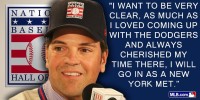
Once Mike Piazza was elected to the Hall of Fame, we all knew it was only a matter of time before he declared he will enter the Hall of Fame as a Met. Yesterday, that moment finally arrived:
I have to admit the moment was a little emotional. It brought back all the great Piazza moments for me. From the homerun to cap off that huge comeback against the Braves in 2000 to the post 9/11 homerun to his return to Shea with the Padres, I remembered it all.
I remembered how the Mets went from an average team to a World Series contender overnight. Piazza’s arrival allowed me to go to a Mets postseason game with my Dad and brother. We got to go two years in a row (only time that has happened in Mers history). I got to see the Mets in the World Series. These events were all made possible by Mike Piazza coming to the Mets and re-signing with the Mets.
Now, I get to say that I saw the career of a Mets player who is in the Hall of Fame. I’m incredibly grateful Mike Piazza was a Met. I’m incredibly grateful he will always be a Met. Its amazing how this week has given me the opportunity to re-live all of these great moments. I look forward to re-loving them again this summer. I cannot wait to go to Cooperstown with my Dad, brother, and son to see his plaque in the Hall of Fame.
I’m sure I will get a little emotional again. I suspect you will too.
Congratulations again to Mets catcher Mike Piazza.
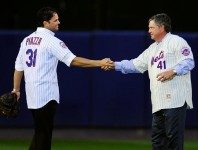
After this week’s events, there is no other place I could go. If you don’t get 100% on this I will be astounded. Name the players who have entered the Hall of Fame as a Met:
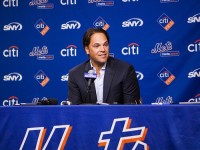
After he was banished from baseball for violating its golden rule, it appeared there would be no more moments of glory for Pete Rose. When you gamble in baseball, you always lose. You’re always out. No more managing the Reds. Certainly, no Hall of Fame.
Then Bud Selig relented, if only slightly. As part of the turn of the century, Major League Baseball wanted the fans to vote on the All Century Team. Even though Rose’s name would never be permitted on a Hall of Fame ballot, Major League Baseball was going to allow its fans to decide if the Hit King should be a part of the All Century Team. The fans selected Rose, and Selig invited Rose to take part in the honoring ceremony during the 1999 World Series.
At the time, we believed this would be the last time Pete Rose would ever step foot on a major league ball field. When the members of the All Century team were introduced, Rose received the biggest ovation. It was a big night for him. On that night, it was also a big night for Jim Gray to get an interview with Rose:
Jim Gray stood there and asked every question each and every person was hoping Rose would answer. On the one hand, he was forceful in trying to get answers to his questions. On the other, he was seemingly doing his job. He would be universally derided. A new rule was set forth. There should be no tough questions when a former player is celebrating an achievement. That was until yesterday.
Finally, after years of waiting, Mike Piazza was elected to the Hall of Fame. He then did the rounds to answer questions on what it meant to him to be a Hall of Famer. It was a victory tour of sorts for Piazza. Then came the question that you’re no longer supposed to ask on these occasions (as transcribed by Adam Rubin and published on ESPN):
Are you bothered when people make accusations against you alleging steroid use and just cite acne on the back?
Someone broke the rule and went there. Piazza was gracious answering the question saying he “really want[ed] to celebrate his career” and accusations like that are out if his control.
In the past, this issue has rankled him. He once asked Peter Gammons, “what does acne have to do with steroids?” He had steadfastly denied the steroids rumors. Rumors that have been propagated by the Murray Chasses and Jon Heymans of the world without any proof. Despite the rumors and innuendo, Piazza rose above it all and became a Hall of Famer. He deserved his moment in the sun. However, someone had to go and ask him a steroids question. At one time, it might’ve been a fair question. After 1999, such questions were supposed to be out of bounds. It wasn’t yesterday.
If someone like Pete Rose, who agreed to his own banishment under the cloud of his betting on baseball, can’t be asked hard questions, no one should. This goes double for Mike Piazza, who has never been implicated in any report, test, or investigation. Hopefully, one day these questions will end, and we can just focus on Piazza’s career. Unfortunately, that day is not today. At least for today, no question is out of bounds no matter the setting.
It makes me wonder. Is Piazza owed an apology for the question, or is Jim Gray owed an apology for the criticism he received?
Editor’s Note: This article was originally published at metsmerizedonline.com
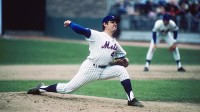
With the 2016 Hall of Fame class being announced yesterday, it’s hard to believe the Mets will have two Hall of Famers. Understandably and rightfully so, 2016 will be the year for the Mets to honor Mike Piazza. However, it’s high time the Mets also honor Tom Seaver.
Depending on your age, you identify the Mets with a particular player. Some will pick Piazza. Younger fans will pick David Wright. Many will pick any one of the players from the 1986 Mets. Part of this is a recency bias. Another part of this is the failure of the Mets organization to forever hold out Tom Seaver, The Franchise, as the Mets singular franchise player.
Go to other big league stadiums, particularly the new ones. The Yankees have Monument Park. In Monument Park, the Yankees have paid special tribute to five Yankees including Babe Ruth and Lou Gehrig. The Giants have a statue of Willie Mays. The Phillies have one for Mike Schmidt. The list goes on and on. The Mets? They only have a special honor for Jackie Robinson.
Walk around Citi Field. There’s no special designation for Seaver. Yes, his number is retired. His retired number also hangs on the same wall as Jackie Robinson. There needs to be a Tom Seaver statue. The main reason is all Mets fans need to know who he was. For some reason, Seaver isn’t spoken about in the historical context as he should. Part of the reason could be the team he represents.
This isn’t an issue of the Mets finances. I’m not mocking the Mets here for not having enough money to purchase a statue. The Mets had the money to build Citi Field. It’s an issue or priorities. They never prioritized honoring Seaver. I still don’t understand why.
Every Mets fan needs to see Seaver on their way into Citi Field. Kids should be asking their parents and grandparents about Seaver. They should hear stories like I did from my father. Stories about how he was nicknamed The Franchise because he turned the Mets around. They need to hear about “The Imperfect Game.” They need to hear stories about the Miracle Mets. They should hear about how Seaver used his legs so much while he was pitching he got dirt on his knee.
There’s no better place to tell these stories than at the ballpark. It’s where my father told me about them. I hope one day he’ll get to tell my son those stories too. I’d love for my son to see the statute and ask, “Who’s Tom Seaver?” I’ll just then sit back as my Dad tells him the same stories he told me.
This is what we’re missing with the Seaver statue. We’re missing the history not only of the Mets, but also baseball. Sure, I look forward to my Dad telling my son about how he grew up a Brooklyn Dodger fan, and Jackie Robinson was his favorite player because he ran pigeon-toed just like my Dad did. It’ll be awesome, but it’s also a problem. My son will ask the Jackie Robinson but not the Tom Seaver question on his way into the ballpark.
The Mets have been around for 54 years and have developed their own rich history. It’s time to properly honor it with a Seaver statute. Then maybe one day we can have a Piazza statute when I can regale my son and hopefully grandson in the future with stories like the trade bringing him to the Mets, him being the greatest hitting catcher ever, and the post 9/11 homerun. Sure, I’ll relate those stories anyway because they’re great stories. However, I want my son to ask me about them. A statue honoring the Mets Hall of Famers would go a long way in that regard.
It’s time to honor Tom Seaver. It’s time to build him his statue. It’s not just for him, but for all Mets fans. The ones that saw him play and the ones not yet born. The a Mets need to honor their history now and set it in bronze.
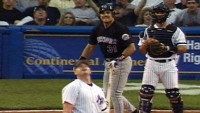
There are moments in your life when you will always remember where you were. On July 11, 2000, I was working as a waiter at Ruby Tuesday taking the order from a table of Mets fans when this happened:
I just remembered screaming “Oh my God!” Initially, the father thought there was an issue with the Sonora Chicken Pasta. I then pointed to the TV, and we all watched the replay. That moment hung in the air until the 2000 World Series when Piazza would face Roger Clemens again. It was at that time, Clemens lost any benefit of the doubt:
For that one, I was sitting in my dorm room surrounded by my friends who were Yankee fans. Of course, they were defending Clemens. I’m sure they felt the same way when Clemens beaned Derek Jeter.
In any event, Clemens had a reputation as a head hunter. He presumably hit Piazza because he couldn’t get him out. Piazza hit .364/.440/.995 against Clemens with four homers and 10 RBI in 22 at bats. The only thing Clemens could do against Piazza was throw at him. Clemens was allowed to get away with it because no umpire would throw him out if a game for throwing at Piazza. He never received a call from the league to let him know he was being suspended. He also didn’t get a call yesterday. Mike Piazza did:
Piazza gets the call. #HOF2016 pic.twitter.com/WoJqylLgDi
— National Baseball Hall of Fame and Museum ⚾ (@baseballhall) January 7, 2016
Piazza got the call that he’s a Hall of Famer. Clemens learned he was once again being called out by another player for using steroids:
.@rogerclemens gets 45.2% of votes for HOF,up from 37.5last year.The 7time CyYoung winner issued following statement pic.twitter.com/qclbFxRcYW
— Mark Berman (@MarkBermanFox26) January 7, 2016
For better or worse, Piazza will always be tied together with Clemens due to Clemens’ actions. However, now when the story gets told it’ll be how a man kept out of the Hall of Fame due to steroids use went after a Hall of Famer he couldn’t get out. Despite everything that transpired between the two, Piazza is a Hall of Famer, and Roger Clemens isn’t.
Piazza got the last laugh.